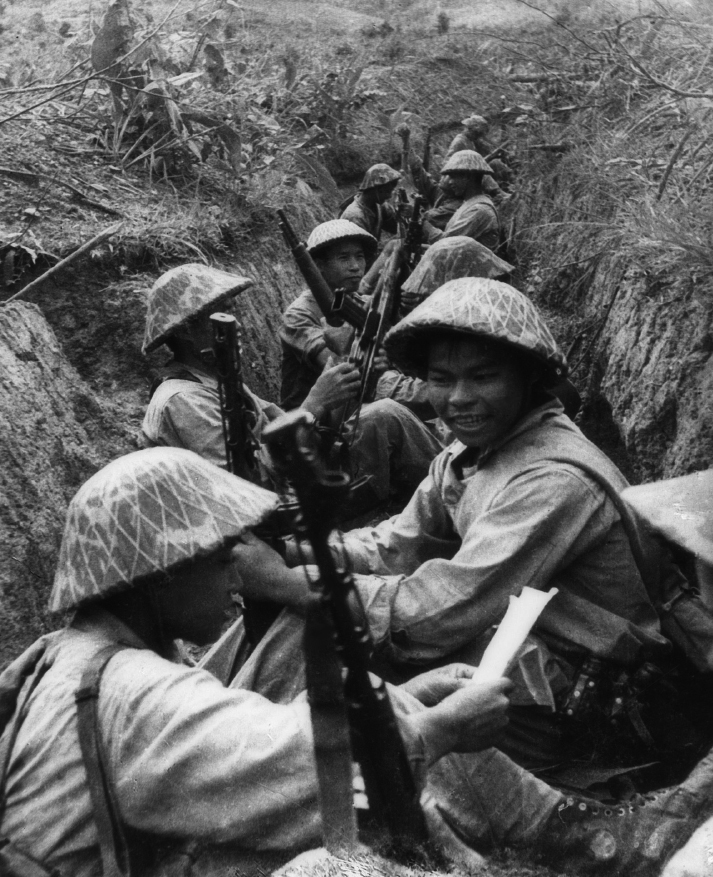Exploring American Histories: Printed Page 810
Exploring American Histories, Value Edition: Printed Page 666
Early U.S. Intervention in Vietnam

Eisenhower’s intervention in Vietnam would have profound, long-term consequences for the United States. By the 1950s, Vietnamese revolutionaries (the Vietminh) had been fighting for independence from the French for decades. They were led by Ho Chi Minh, a revolutionary who had studied Communist doctrine in the Soviet Union but was not controlled by the Soviets. In fact, he modeled his 1945 Vietnamese Declaration of Independence on that of the United States. Ho’s overriding objective was the liberation of Vietnam along socialist principles. In 1954 the Vietminh defeated the French at the Battle of Dien Bien Phu. With the backing of the United States, the Soviet Union, and China, both sides agreed to divide Vietnam at the seventeenth parallel and hold free elections to unite the country in 1956.
President Eisenhower believed that if Vietnam fell to the Communists, the rest of Southeast Asia and Japan would “go over very quickly” like “a row of dominoes,” threatening American strategic power in the Far East as well as free access to Asian markets. Convinced that Ho Chi Minh and his followers would win free elections, the Eisenhower administration installed the anti-French, anti-Communist Ngo Dinh Diem to lead South Vietnam and then supported his regime’s refusal to hold national elections in 1956. The anti-Communist interests of the United States had trumped its democratic promises. With the country now permanently divided, Eisenhower funneled economic aid to Diem to undertake needed land reforms that would strengthen his government and weaken the appeal of Ho Chi Minh. The president also dispatched CIA agents and military advisers to help the South Vietnamese government set up security forces, train military units, and extend educational opportunities. However, Diem used most of the money to consolidate his power rather than implement reforms, which only widened opposition to his regime from Communists and non-Communists alike. This prompted Ho Chi Minh in 1959 to support the creation in the South of the National Liberation Front, or Vietcong, to wage a military insurgency against Diem. By the end of the decade, the Eisenhower administration had created a major diplomatic problem with no clear plan for its resolution.